The document details the construction of a high-level bridge over the Sutlej River, with a total cost of 63 crores, executed by the B&R division of PWD. It discusses the bridge's specifications, construction materials, and well foundation design, including detailed parameters such as scour depth, reinforcement requirements, and sinking methods. Additionally, it highlights potential challenges like bridge scour and sand heaving during the construction process.


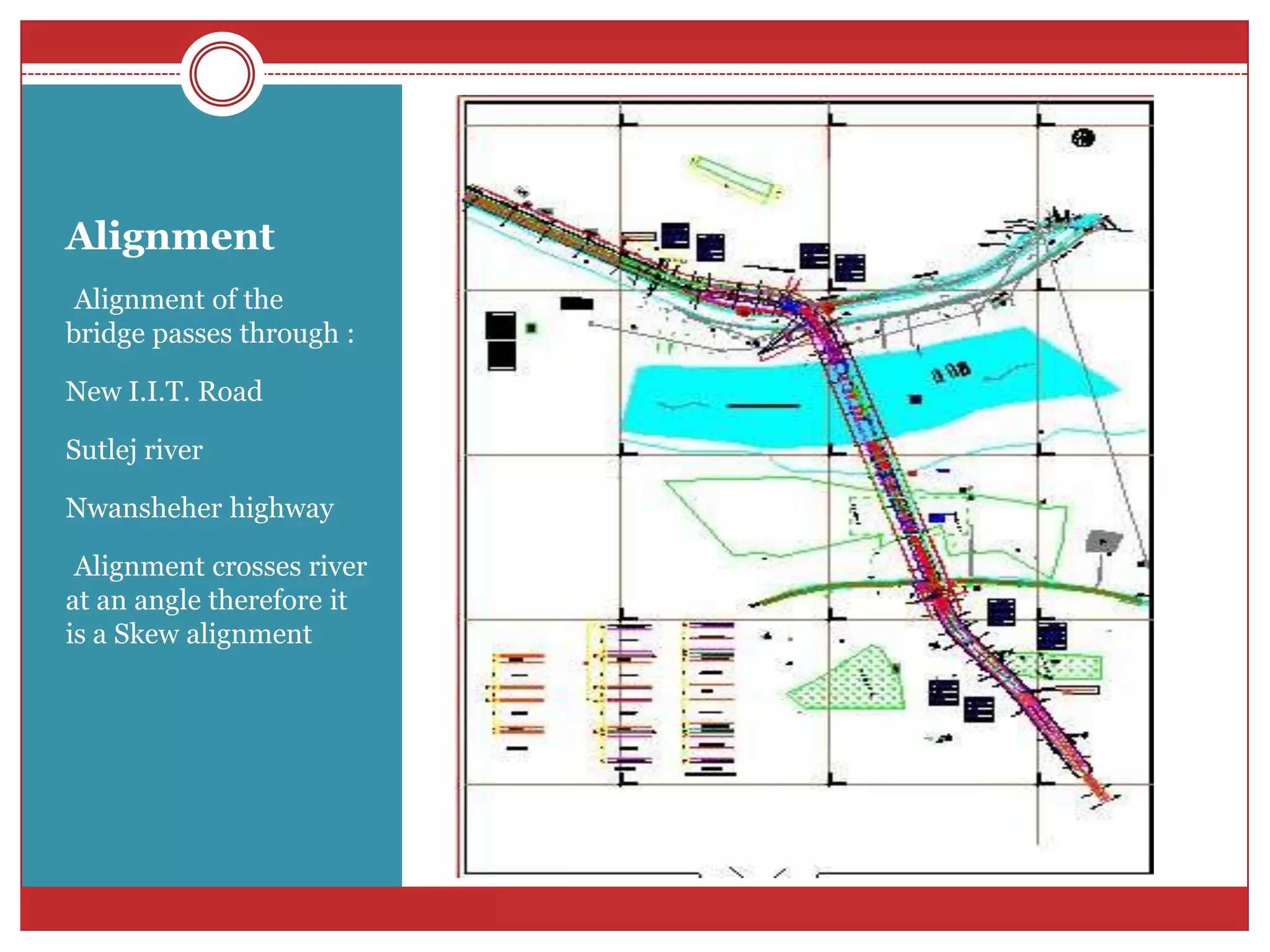
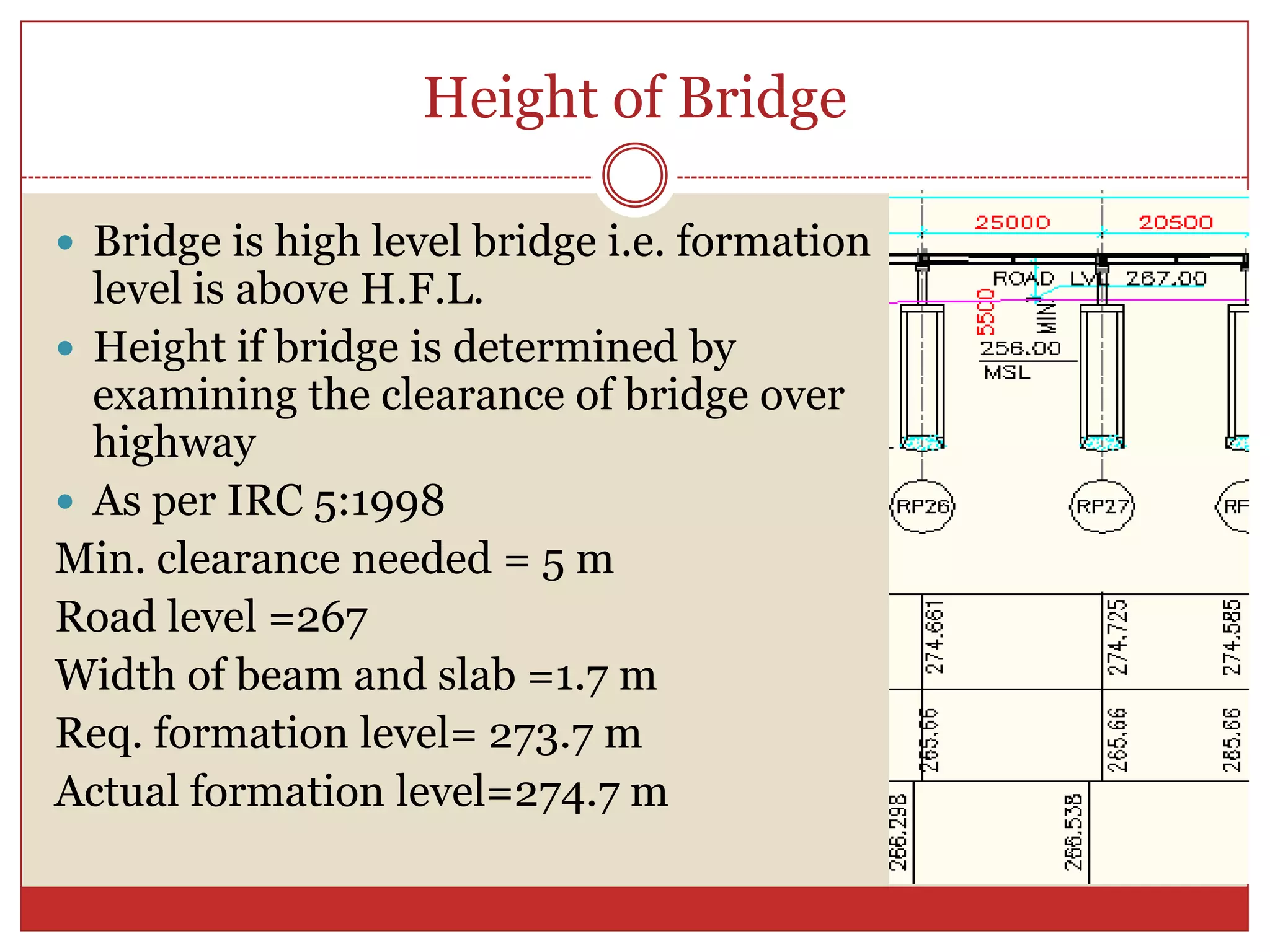
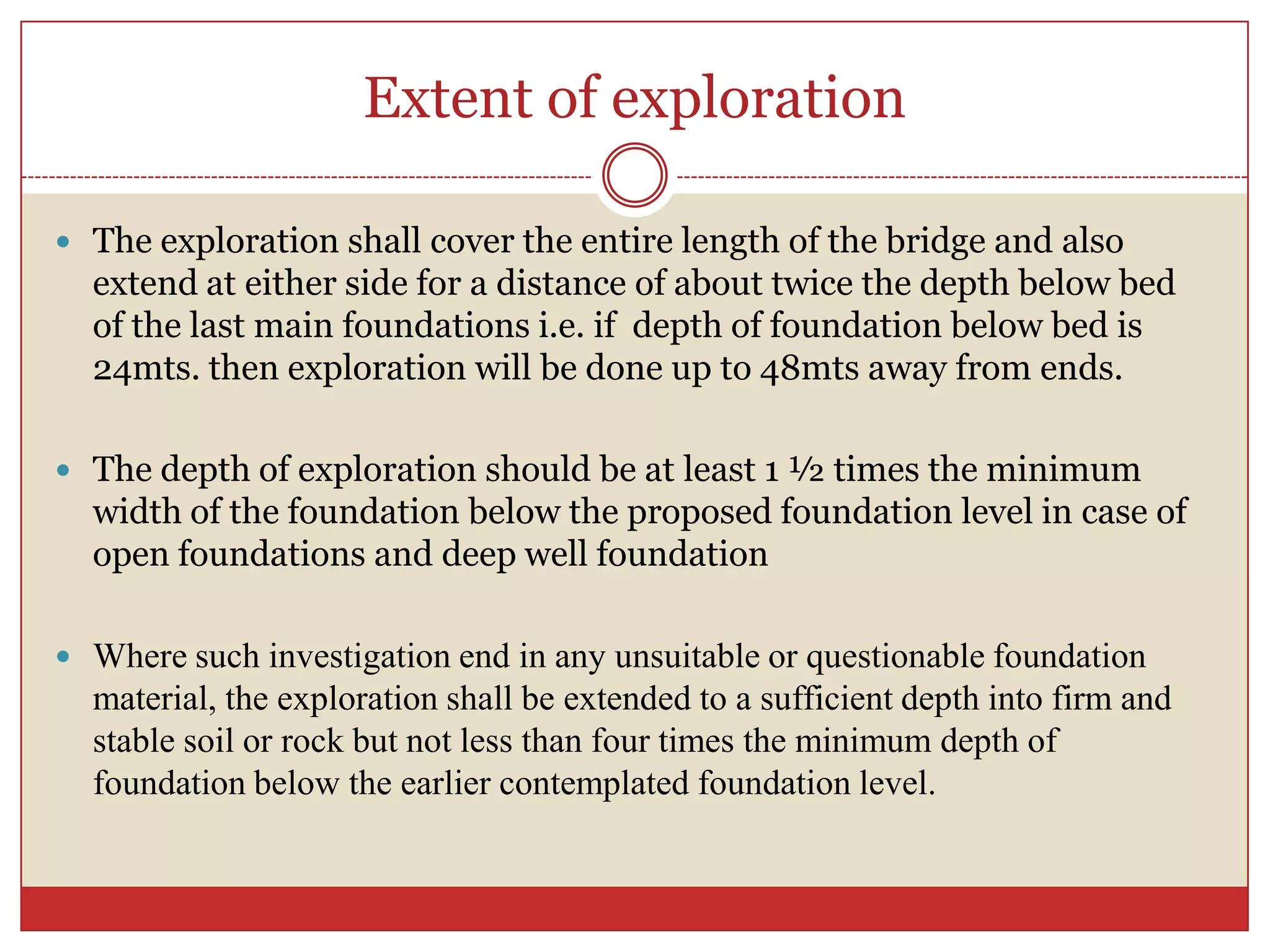
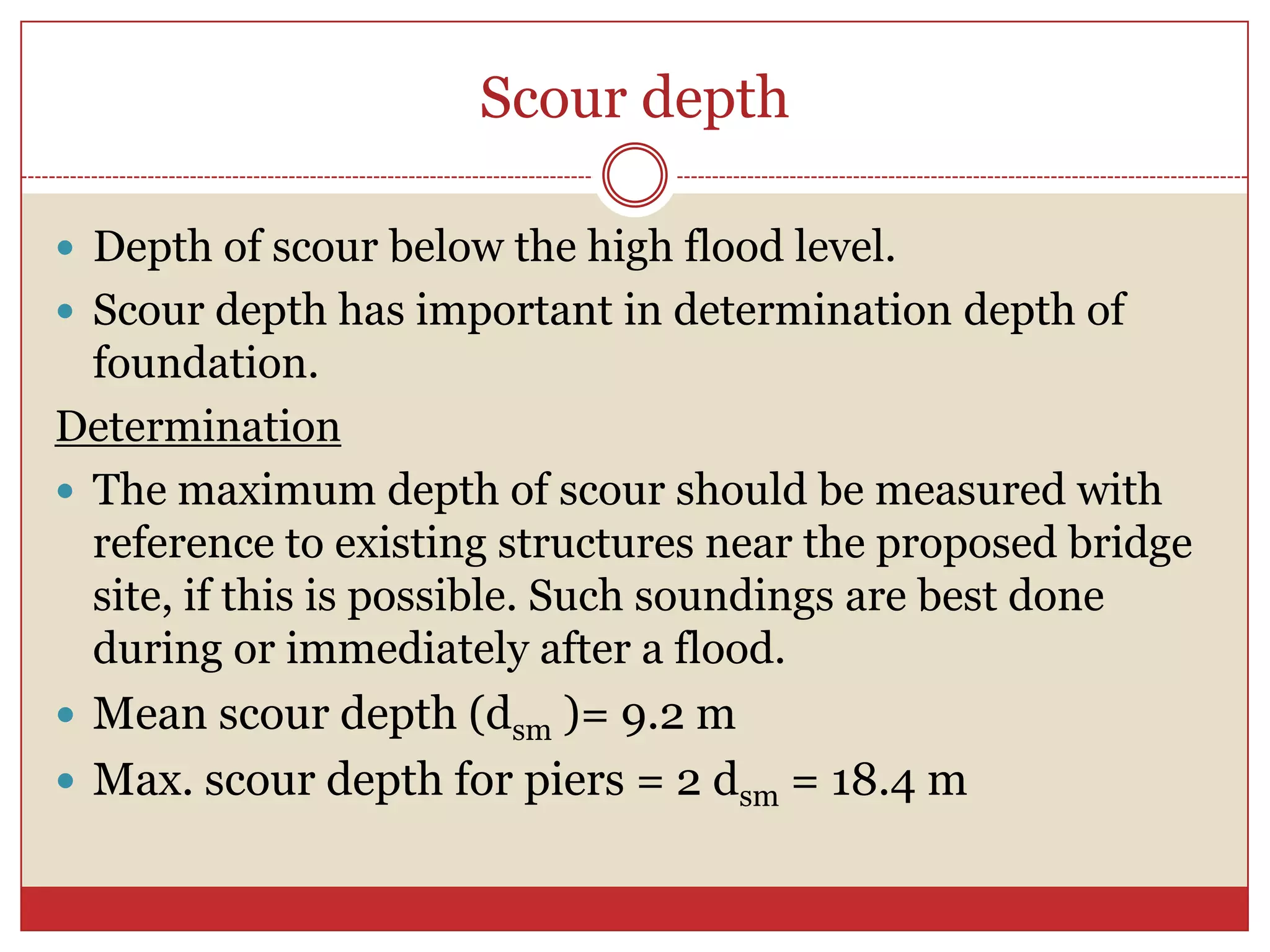

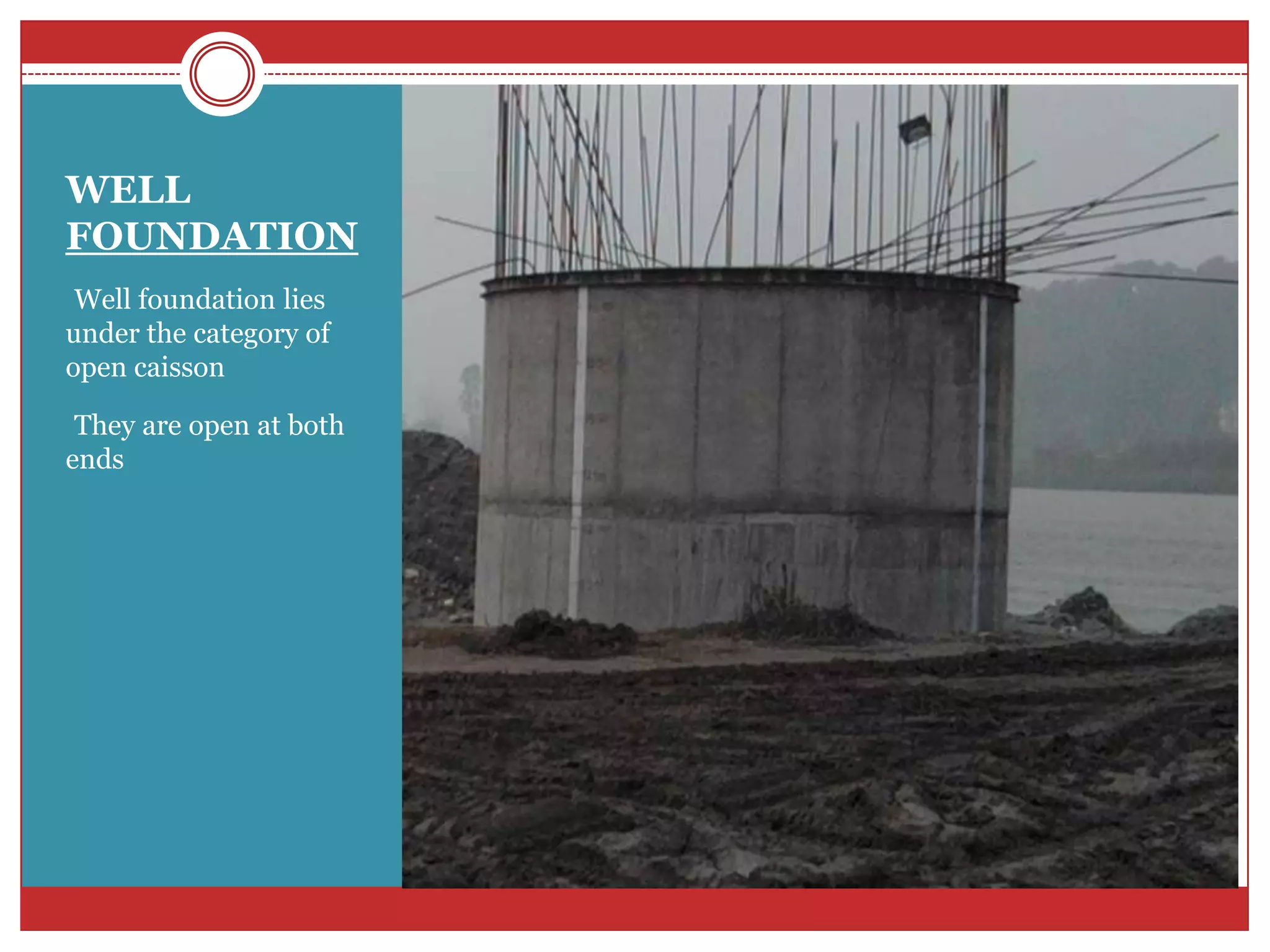


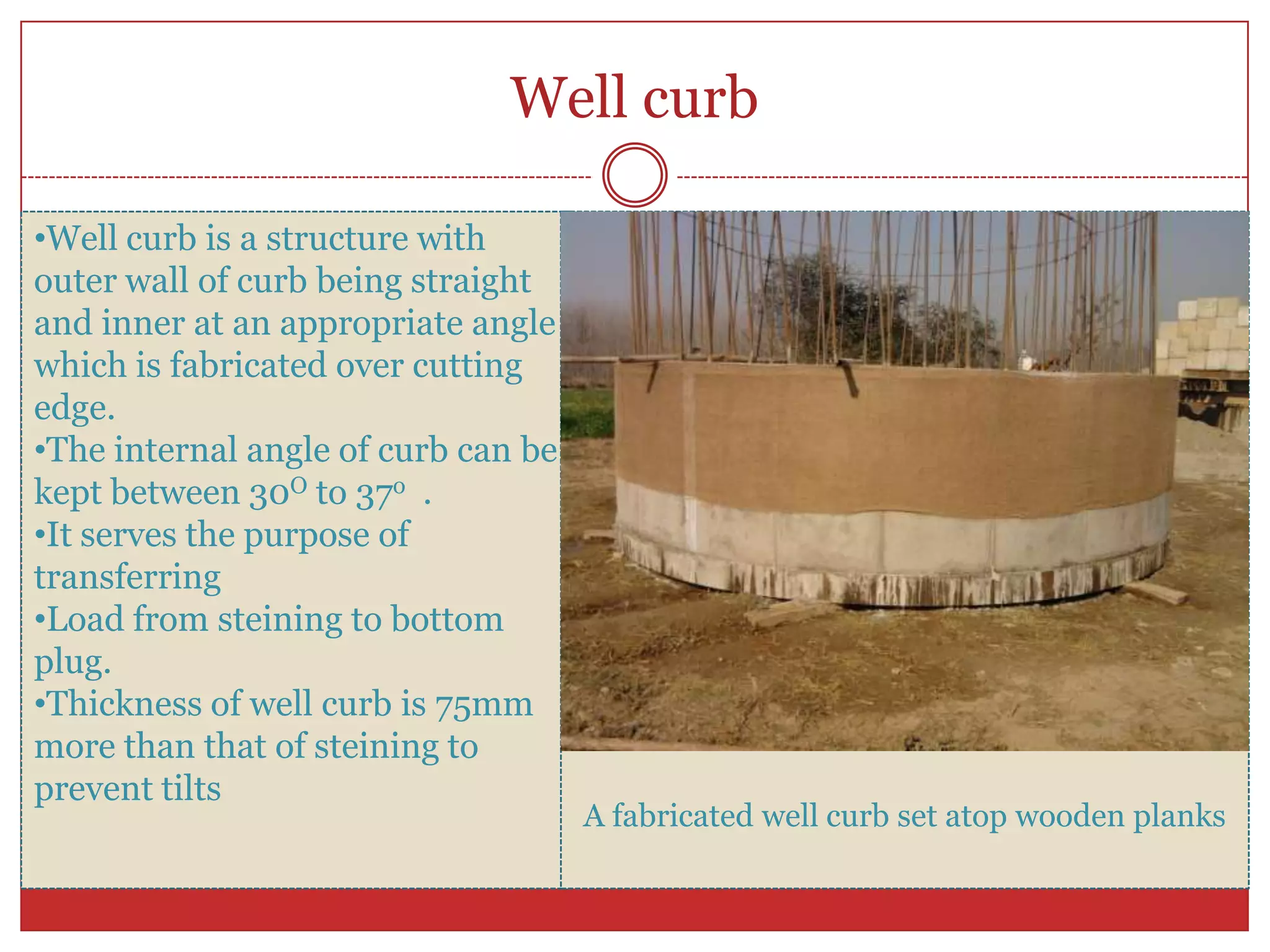
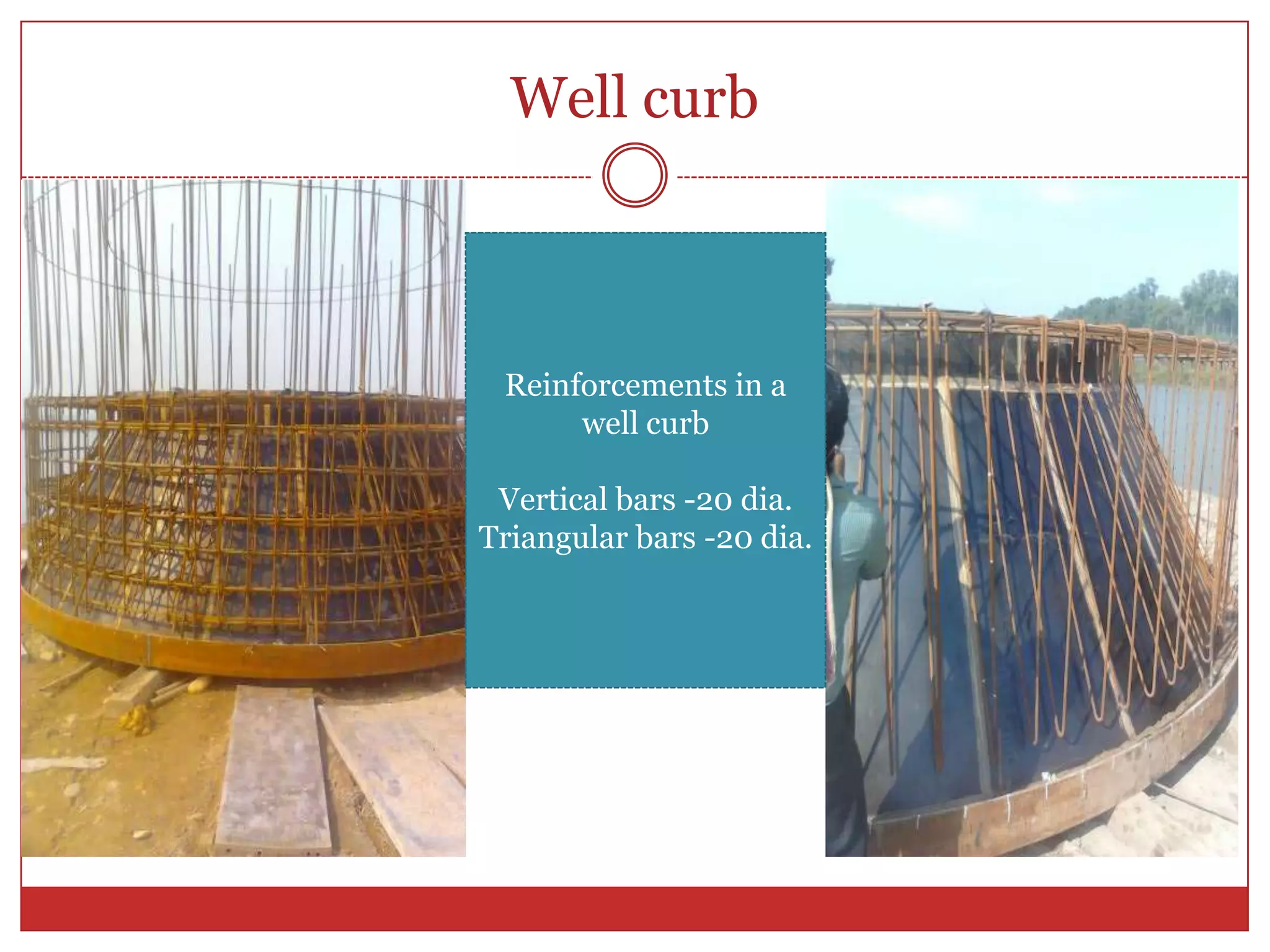








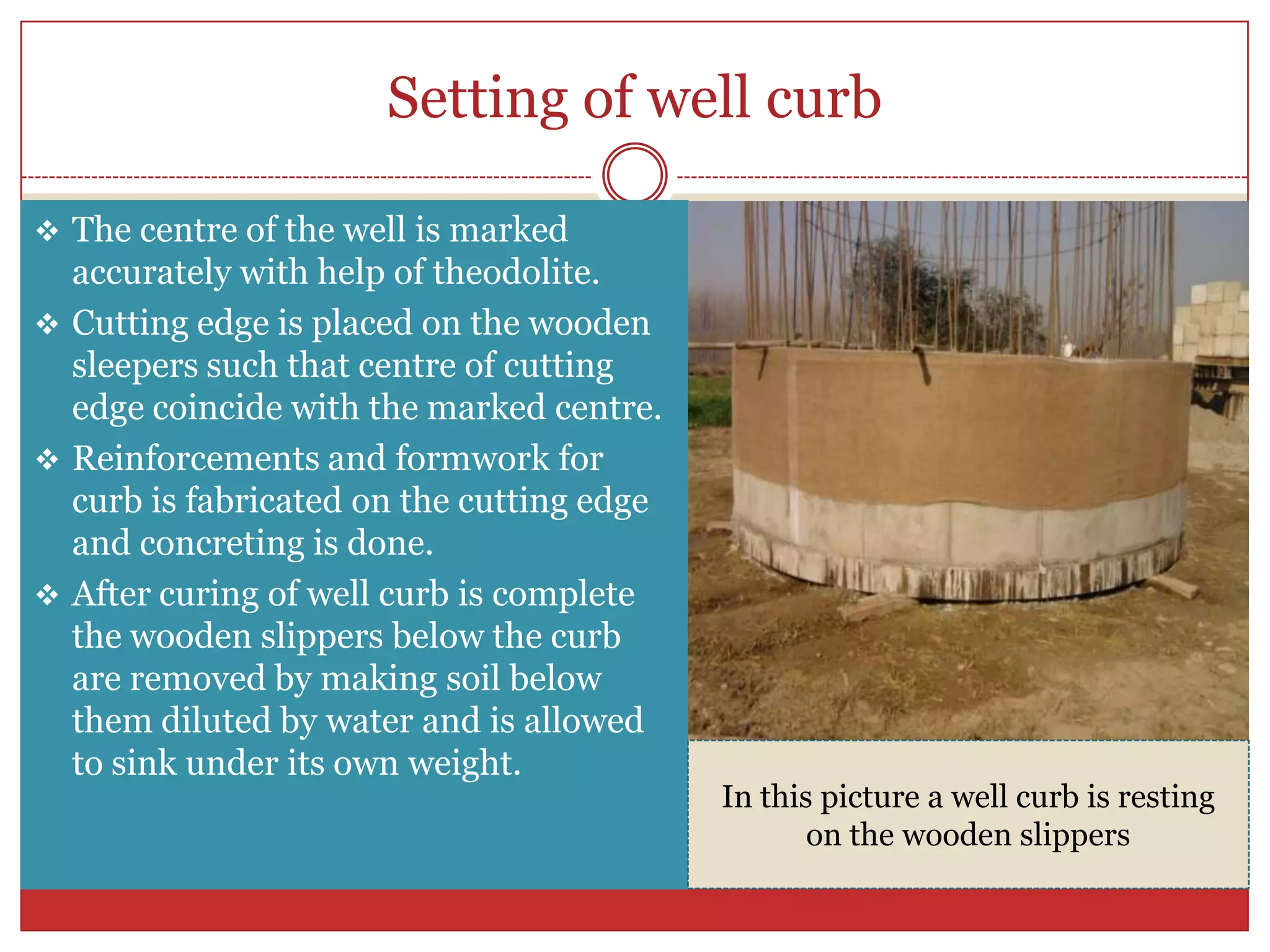






![Method of checking tilt and shift
Tilt and shift are calculated with the help of
a level and total station.
Method
Difference between height of points (1& 3)=
R.L.(1)-R.L.(3)
Tilt
= [ R.L.(1)-R.L.(3)]/diameter
Shift at bottom from top position
= tilt/ length
Note : this process is repeated on sides (2 & 4)
and in similar manner tilt is obtained and
then combined tilt and shift is reported.
Shift of well at top is measured by total
station.](https://image.slidesharecdn.com/09102053constructionofhighlevelbridgeoversutlej-130209150640-phpapp02/75/Well-Foundation-28-2048.jpg)



